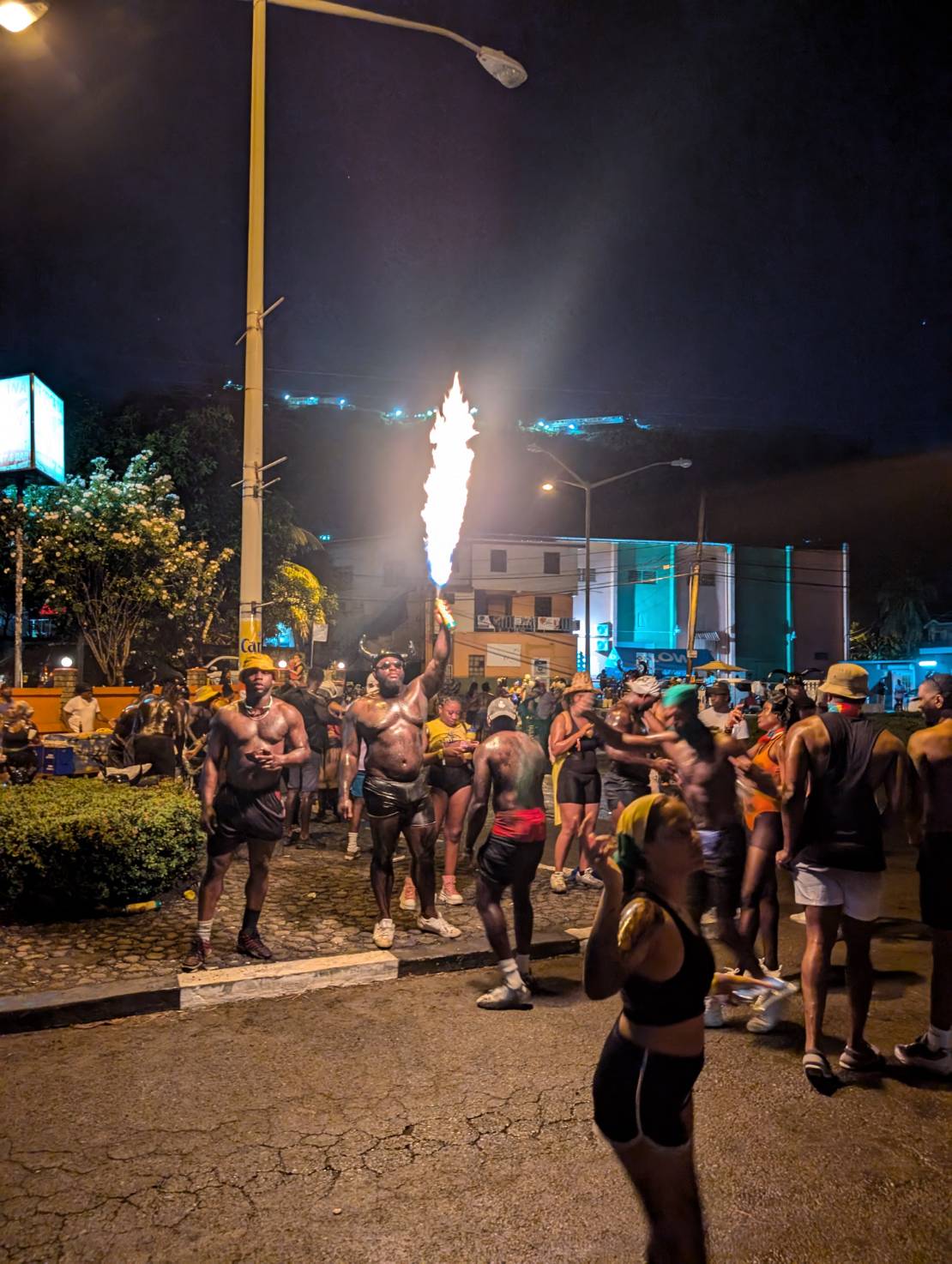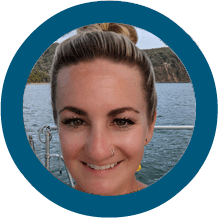CARIBBEAN LAP REPORT SV JUBEL
SV JUBEL'S CARIBBEAN LAP

SV JUBEL just finished their 1 year lap around the Caribbean. BRAVO ZULU! Here they share their story:
We are currently in progress building an HH44 Catamaran in Cebu, Philippines, which will be completed in January 2026. It's our plan to cross the Pacific to meet the boat so we can move aboard directly from JUBEL. But we didn’t come all this way from Vancouver island to skip the Caribbean. Having crossed the (Panama) Canal in September 2023, we spent some time in Bocas del Toro, the San Blas, Panama, and Cartagena, Columbia. Knowing we wanted to see the Caribbean, we decided to do a speed loop of the Windward and Leeward Islands.
The trip started from Cartagena, Colombia and we set off for Puerto Rico, or maybe the DR, on March 26th, 2024. We didn’t know where we would end up. We had heard this passage was notoriously bad, and that we may have to divert westward. So loaded with 8 extra jerry cans of diesel, we set off, along with our friends on SV VIA, a Caliber 40LRC (that holds 400+ gallons of diesel!) This trip was exactly what they say it was. We motored for 700 miles, into the wind and the waves. At times doing 3 knots. We broke our davits due to the constant slamming into the waves. We also had some flat calm days. Overall, we sailed about 10 hours out of the entire 6 days.
We ended up in Boquerón, Puerto Rico. We spent time cruising Puerto Rico for a month along the southern side of Puerto Rico, and flew home in (to Canada) in May. Our highlights are Isla Caja De Muertos, where you can hike up to the top of an abandoned lighthouse, and Isla Culebra for its snorkeling and coral farms, and of course, Costco in San Juan.

With our boat loaded with a years worth of Costco supplies in Puerto Rico we made our way to the USVI’s where it was a surprise that they drive on the opposite side of the road. We spent a few days in St. Thomas, of course, stopping at the pizza boat where we attended a massive memorial day party hosted on a catamaran while we floated in the water.

A few days on the northern side of St. Johns before making our way to the BVIs. We have a dog on board so this was pretty difficult to sort out, as you have to have a lot of paperwork and health check proofs. We met the vet in Soper’s hole where he had to inspect Ricky, our dog, in person. Once that was dealt with we made our way to pussers for a rum! This was the first island we considered “the Caribbean”, and we made it!
We spent three weeks bouncing around the BVIs including Norman Island (and the infamous Willy Ts, where we floated behind it in our Sunchill, met friends, and had beers thrown into our pool!

Anchoring at the Baths, (where our engine died coming into the anchorage, that turned out to be ricky leaning on the shutoff button!), and spending time in Virgin Gorda was also great. Our favorite anchorages were Savannah bay, and the north side of Prickly Pear Island. Having the Rum Runner bring us blended cocktails right to our boat was (also) a highlight, along with visits to Saba Rock.
From The BVIs we checked out and headed to St. Martin, stopping at the French side first. The beaches here were phenomenal. While a little run down, its very pretty, and the French food supply is amazing. We had FKG rigging come out to the boat by dinghy to give us an estimate for the standing rigging replacement that we needed. They gave us a very, very reasonable estimate and we headed over to their dock on the dutch side to have the work done. A week later, everything was brand new. Highly recommend them! We also had a new generator motor shipped here and replaced that, as our previous one had water ingress due to a manufacturing defect. St. Maarten is an amazing location for boat work and supply, especially since its all tax free. There are also great restaurants here, where we met up with some other Young Cruisers and talked shop, so we will definitely come back at some point. St. Maarten is a hit on our list!
Our next stop was Guadeloupe. It was here that we rode out hurricane Beryl. On the west side of the island behind the mountain, we set out a 10-1 scope in 20 feet of water. Luckily (for us, certainly not the islands south of us) it headed south. We were hit with 35 knots of wind and a ton of rain, but otherwise, unscathed. After the weather cleared, the view was beautiful.

We worked our way down Guadeloupe, and anchored in some very rolly anchorages - There is not much for protection on this side of the island. We stopped in several hot springs and enjoyed the natural hot water that comes out all over the island. After an absolutely brutal sail crossing from Guadeloupe to Terre-de-Haut, a group of small islands south of Guadeloupe, we went to explore and island and old fort. There is a really cute little town (but not much for food available) that you can explore.

From there we made our way to the jewel of the Caribbean, Dominica. I can not say enough about this place. It is, by far, our favourite locale in the caribbean. Absolutely untouched and unspoiled. There were no tourists, the locals were the friendliest people we have ever met, and would do anything for you. The natural beauty of this island is absolutely stunning.Waterfalls, valleys, hot springs, gorges - It has it all.

What it doesn’t have are services, restaurants, fuel docks, or supply shops. You are on your own. So bring what you need, and stay as long as you can. We grabbed a mooring ball in Portsmouth bay for $10 a night, where the PAY (Portsmouth Association of Yacht Services) will come out to the boat and give you anything you need, and help you check in. We rented a car from a local company (that we had to swap out three times because they were not in great shape - Old cars imported from Japan), they also drive on the British side of the road (in Dominica). Its like driving in the game “crazy taxi”. We drove all over the island over 5 days.


We went to visit Titou gorge where they filmed parts of the Pirates of the Caribbean

Overall, Dominica gets a 10/10 for us. We will be back to this island before our cruising career is over. Its got so much to offer, and so much that we haven’t seen, for a small island. Our provisions were running low so it was time to carry on. We made our way to Martinique from here, where we knew we could provision. And provision we did. Wine, cheese, butter, oh my. The French have food nailed down. We were here during a summer festival and I have never seen so many boats on the move, ever.

Martinique was the busiest place we’d ever been. The bays were full, with hundreds if not thousands of boats. It was way too busy for us. And they’re very not dog friendly. So after we provisioned, we carried on down to Grenada. We skipped St. Lucia for safety concerns, and therefore had to skip St. Vincent and the Grenadines due to our dog and rabies rules. That, and its been hit hard by Beryl at this point.
Grenada became our home for about a month and a half while we waited for hurricane season to subside slightly. The next stop after this was Bonaire, so hurricanes weren’t a big concern. We met up with friends, enjoyed copious wing nights, went snorkeling, and hauled out because we had won a free haul out from Spice Island Marine at the Young Cruisers Association Cruisers Awards. We were here for Carnival which was amazing.


We had tried out all the anchorages and there was a weather window coming. It was September at this point, so it was time to carry on to Bonaire. After a sporty 3 day sail downwind (oh how nice it was to go downwind finally, after beating our way east all the way to Dominica), we arrived in Bonaire. The water clarity blew our minds.


However, the lack of Starlink was frustrating after having it for so long. So back to a cell phone data plan we went, we spent our days snorkeling and swimming. We rented a car and drove around the whole island, stopping to feed the roadside donkeys apples and carrots.

Bonaire was definitely another highlight. The freediving and snorkeling is amazing. Its everything its cracked up to be.
We skipped Curacao and headed to Aruba to meet friends and for my parents to fly in. We loved Aruba - Dove on a shipwreck, swam with turtles, went out to fantastic restaurants, played some slot machines, had some pool days at the Hyatt pool, and even found a Canadian bar that had Poutine and took Canadian money!
Now here we are in Cartagena once again, having crossed our track when we left 8 months ago, so very happy we traveled where we did and saw what we saw. The experiences will stick with us forever, and we hope to go back to some of the islands once again in the future. Now, its time to go back to San Blas one more time before we prepare for our grand adventure across the Pacific!
SY JUBEL 🇨🇦 Leah & Kyle - Gulfstar 44'


THANK YOU FOR SHARING YOUR HIGHLIGHTS FROM YOUR 8 MONTH CARIBBEAN LOOP

SABA DIGITAL CHARTS
SABA DIGITAL CHARTS IN MBTILES FORMAT
AHOY !
... join the Ocean Posse to gain access to THIS AND OTHER information >>
JOIN THE OCEAN POSSE _FOR ACCESS TO THIS AND OTHER INFORMATION - SIGN UP HERE >>
ALREADY SIGNED UP ? FOLLOW THIS LINK TO LOGIN >>
The Ocean Posse offers many saving benefits in addition to validate information by fellow yacht owners >>
BENEFITS OF of joining the Ocean Posse
SAVE TIME - SAVE MONEY - and get the best and most up to date INFORMATION !
| BENEFITS FOR YOU, YOUR YACHT & YOUR CREW |
|
|
| PRE SEASON | IN SEASON | |
| ✔️ Up to date and verified information by fellow yachts | ✔️ | ✔️ |
| 📊 Communications focused on facts, not opinions or unsolicited advice | ✔️ | |
| 💰 Save real money at 70+ Marinas with discounts * | ✔️ ( June ) | ✔️ |
| 🛰️ Free vessel and fleet tracking courtesy of Predict Wind | ✔️ | |
| 🚩 Free Burgee | ✔️ | |
| 💰 Save with service providers and chandleries | ✔️ ( June ish ) | ✔️ |
| 🕵️ dedicated, experienced and discounted Canal and clearing in agents | ✔️ | ✔️ |
| 🗺️ Free aid to navigation 150 Gb OpenCPN satellite charts (mac/pc/android) | ✔️ immediately | ✔️ |
| 💰 Save Money on parts with a Westmarine Pro Discount | ✔️ | |
| 💰 Save Money with a Predict Wind Pro Discount | ✔️ | |
| 🗺️ Free Printable Reference Charts emergency backup to your electronics | ✔️ immediately | ✔️ |
| 📹 Free Video Seminars on destinations from those who are there | ✔️ immediately | ✔️ |
| 🌩️ Top weather routing avail by Marine Weather Center Chris Parker | ✔️ | |
| ⛵ Community of voyagers all are welcome, kids, single-handers, pets | ✔️ | ✔️ |
| ⚓ Peer support in emergencies with escalation procedures | ✔️ | |
| 🛈 Fleet Updates via email – free | ✔️ Prior Fleet immediately | ✔️ |
| 🏆 Fun Award Categories | ✔️ | |
| 📍 Free access to GOOD NAUTICAL Anchorage reports | ✔immediately | ✔️ |
| ☎️ Free Weekly live calls on Mondays via dedicated LINE.me group | ✔️ | |
| 💬 Free 24/7 LINE group channel | ✔️end of June | ✔️ |
| 🌊 Benefit from the latest information and prior experience participants | ✔️ | |
| 🔭 Be part of a fleet of sensor for those who come behind you or meet | ✔️ | |
| 🚷 Always priority traffic – for participants by participants | ✔️ |
- (* as long as you do not have prior contracts or reservations in place and of course subject to a marina’s availability the longer you stay the more discount the marina may give you )
If this is agreeable you can sign up now >>
THE ABOVE FILES ARE FOR LOGGED IN USERS ONLY



